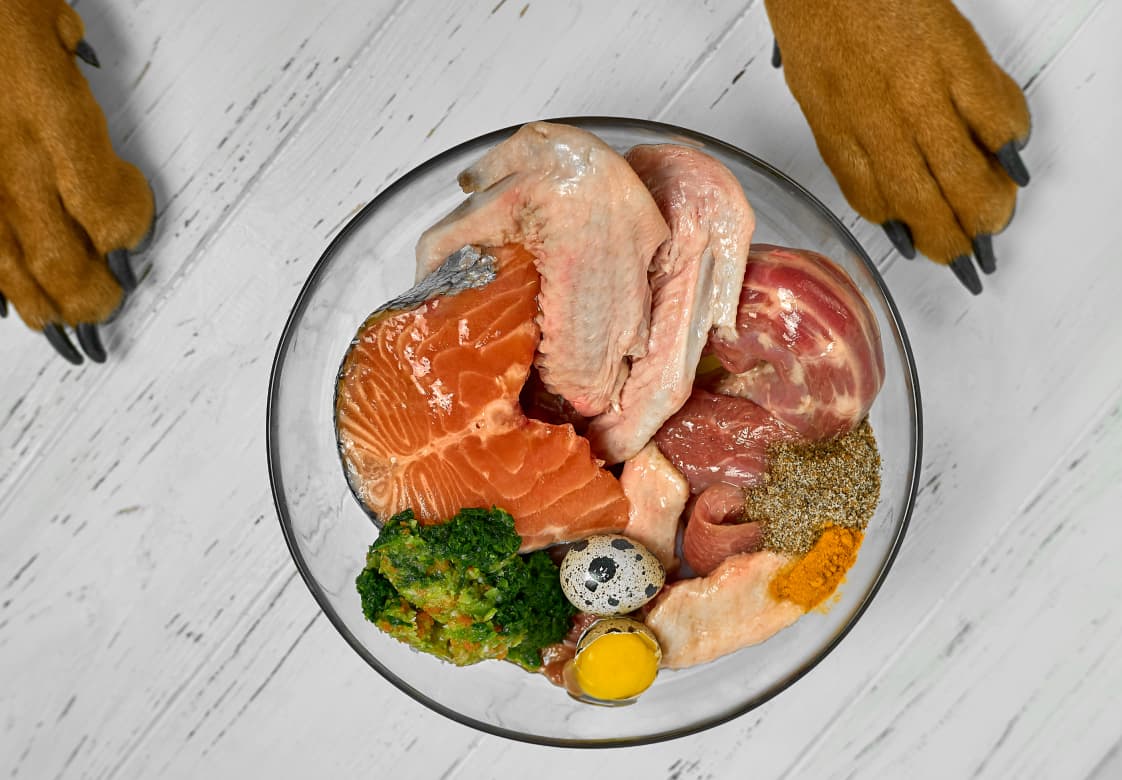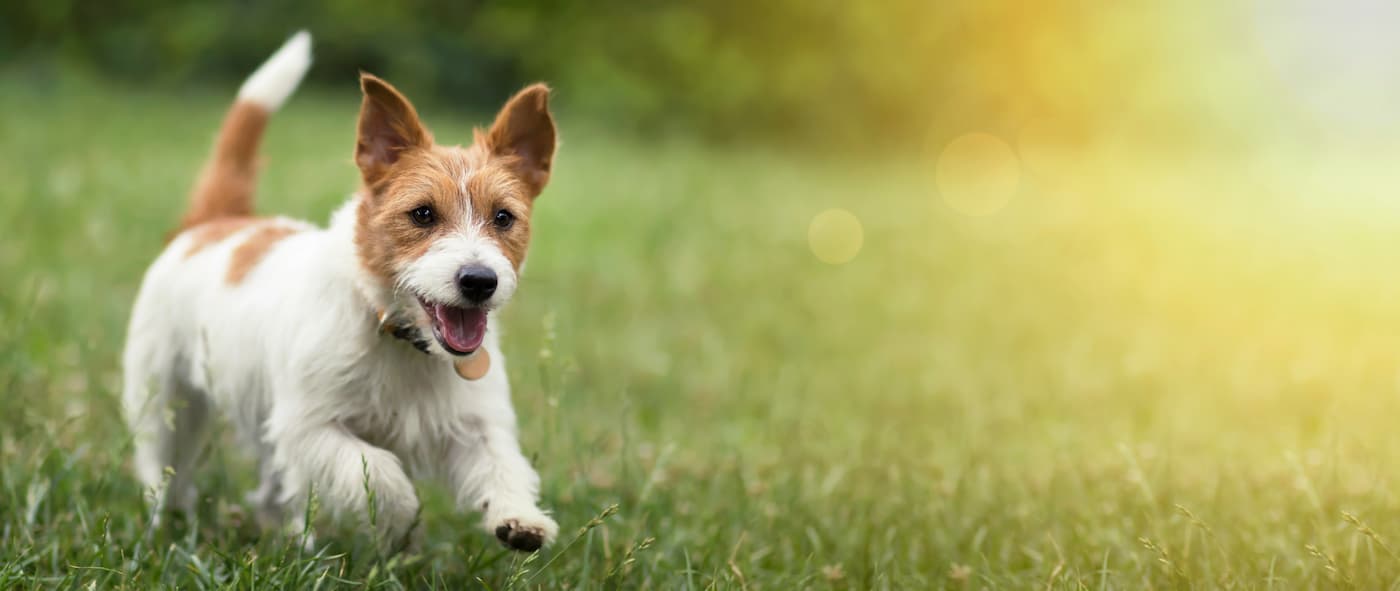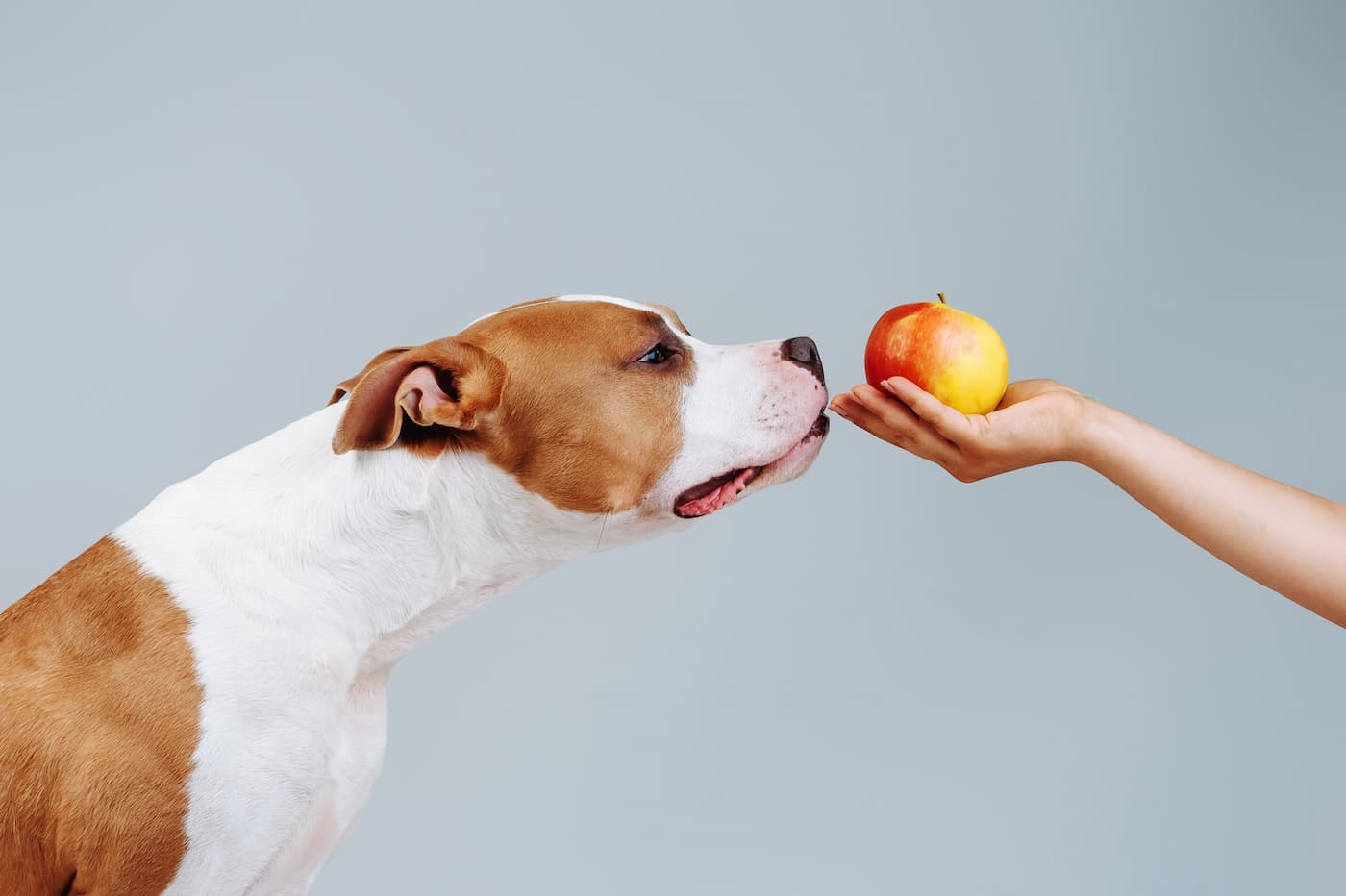Correct and balanced feeding is the key to a puppy’s health and good mood. But what does “correct feeding” mean? Here’s what you need to know about feeding your puppy.
Proper feeding of a puppy implies not only the quality of food, but also the number of feeding times. At different ages, the number of feeding times is different as well. So, what’s the correct puppy feeding schedule and what’s the best food for a puppy?
There are four major developmental stages of a puppy: neonatal (when a puppy feeds on their mother’s milk), transitional (where weaning from a mother begins), active growth phase, and final growth phase.
We will talk about the two most important growth stages for the puppy owner: active (from the moment of weaning a puppy from their mother or from the moment a puppy arrives to their owner’s house until the age of 6-7 months) and final (from 6 months to the end of the growth stage).
What Should I Feed my Puppy?
A puppy should eat specially formulated balanced puppy food corresponding with a puppy’s age and breed. It doesn’t matter whether you choose to feed your puppy with dry or wet kibble or raw food. The only thing that matters is that a puppy’s diet is as tailored to their needs as possible.
The easiest way is to choose ready-made food. Ready-made kibble should be marked as “food for puppies,” preferably with an indication of the breed and age group. Narrow specifications generally indicate higher quality food.
You can find daily feeding guidelines on the packaging. This is usually an average norm for an average dog. If you need to, you can increase or decrease what you feed your puppy by 20% of what’s on the package. Your puppy’s daily allowance of food should be divided into a number of small meals.
How Many Times a Day Should I Feed my Puppy?
Here’s how we recommend feeding a puppy based on their age.
At the age of three months, feed a puppy five times a day. We recommend soaking dry food in a small amount of warm water. If a puppy easily copes with dry kibble, it is important to provide them with free access to fresh water in sufficient quantities. Thoroughly wash and refresh your water bowl 1-2 times a day.
Until your puppy is four months old, you need to feed them four times a day. Divide their daily allowance of food into four parts, and feed your puppy at regular intervals.

At the age of four to six months you can feed your puppy three times a day, and after six months twice a day. Although an adult dog can be fed three times a day, usually from the age of six months, dogs are transferred to feeding two times a day. In the morning they are given half of the daily norm, and the second half is given in the evening.
Now that you know what food and how often you should feed your puppy, the only thing left to mention is that you should feed your puppy after active playing or after a walk if you’ve started going outside. Don’t play with your puppy after feeding; give them time to digest.
| Puppy’s age | Number of meals |
| Up to 3 months | 5 |
| Up to 4 months | 4 |
| 4-6 months | 3 |
| After 6 months | 2 |
Junior Dog Feeding Guide
This stage, especially in medium and large breeds, is characterized by a noticeable slowdown in growth pace, which is why juniors no longer need as high-calorie food as puppies.
It is better to switch to a specialized food for “juniors,” tailored to the dog’s breed’s needs. This food is lower in calories and contains less protein in comparison to puppy food. If you have a small breed dog, you can feed them with puppy food until the age of twelve months.
Different breeds finish growing at different times. On average, small breeds typically stop growing by the time they reach 10 to 12 months of age. Puppies of medium breeds stop growing at around fifteen months, and large and giant breeds usually finish by the age of 18 months or even two years. This is the time when transitioning from puppy and junior food to adult dog food should happen.

Nowadays, it’s common to overfeed dogs and puppies, but this is dangerous for your dog’s health. In adult dogs, overfeeding may result in obesity, and puppies who are fed excessively start growing too rapidly. Rapid weight gain can create an extra load on an immature and developing musculoskeletal system.
The golden rule of feeding is to give the optimal amount of food, not the maximum. The goal is harmonious growth.
Harmonious growth refers to growth that is neither too fast nor too slow, and it is breed specific. For large-breed dogs, overfeeding can result in very serious problems with joints and ligaments, and it may lead to an incorrect positioning of the limbs.
If you feed your puppy with balanced food made specially for puppies, don’t supplement it with any vitamins, minerals, or any other elements without consulting a vet. Consider adding supplements only if you feed your puppy raw food. In all other cases, vitamins and supplements should be prescribed by a veterinary dietitian.
If you train your puppy using treats, give them minimum portions and then subtract the number of treats from your puppy’s daily allowance of dry food.
Why Should I Observe a Puppy Feeding Timeline?
If you do not feed your fur baby as often as required according to their age, this will invariably lead to health problems, and it may also cause problematic behaviour. That’s why you should always find the opportunity to stick to the number of feedings a puppy needs.
If it’s difficult for you to feed your puppy with the required frequency, there are ways to make it work. You can buy an automatic feeder and set a timer on it. Some technology even allows you to record your voice calling your puppy for meal times.
8 Core Puppy Feeding Rules
- Keep in mind that a puppy has the highest energy requirement during the growth period. But for puppies of large and giant breeds, the energy content in the food should be less, and it is worth using low-calorie food.
- Do not forget about the prevention of excess weight. If a puppy is provided with a healthy, balanced diet they will have developmentally appropriate weight gain.
- Puppies need a lot of protein after weaning (typically around 22% of their diet). There is no need to limit your puppy’s protein intake during this phase.
- The fat content should be at least 5-10%, because fat is the main source of energy.
- A puppy should get a sufficient (but not excessive) amount of calcium and phosphorus.
- Despite the fact that a healthy dog does not actually need carbohydrates, they can become an alternative source of energy. Sufficient carbohydrate content in food for a puppy up to 4 months is 20%. However, you can do without them.
- It is best to feed your puppy with precisely measured portions of food. The frequency of feeding depends on the puppy’s age.
- We recommend that you introduce a puppy to different food types. For example, in addition to dry food, you can feed your puppy with homemade treats or wet food.
How Much Raw Food Should I Give my Puppy?
If you’d like to feed your puppy with raw food, the norm is 5-7% of their body weight a day.

However, these numbers are only averages, so watch your pet carefully. If they don’t finish their food and leave some in their bowl, reduce the amount of food. If, on the contrary, your pet devours the food greedily and does not leave the bowl for a long time, you’re underfeeding them and the allowance of food should be increased.
When feeding your dog with raw food, the number of feedings a day matters as well as a portion size. A puppy eats much more often than an adult dog. For example, a two-month-old puppy should eat five to six times a day. Only by the age of nine to twelve months can a dog be transferred to two meals a day.
Not considering the factors we’ve discussed can put your dog’s health at risk. Only proper feeding will help you raise a healthy and happy dog.
